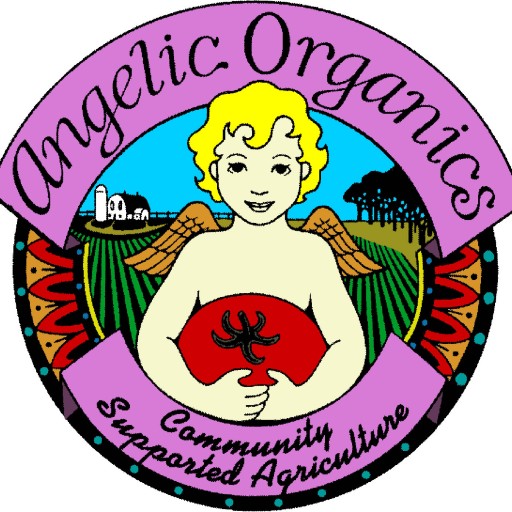Julia Goodman Writes about Her Encounter with Angelic Organics Beets
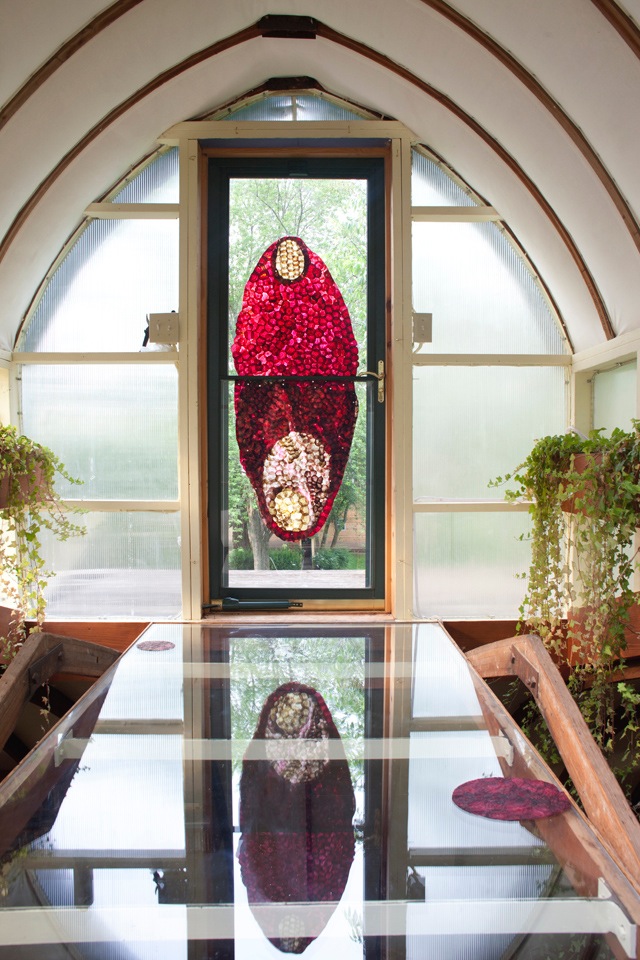
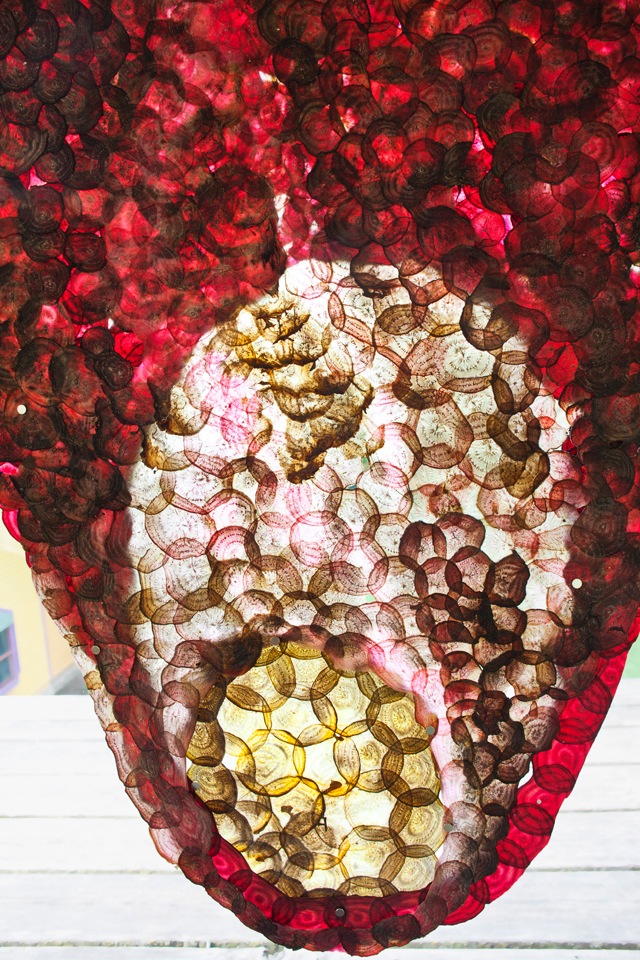
Earlier This Summer
I was fortunate to spend part of the summer at Angelic Organics Farm completing a site-specific installation using beets from the farm. I am incredibly grateful for the opportunity to harvest beets from the fields, immediately work with them in the barn, and leave pieces hanging in the farm’s windows. Eventually the pieces will go in the compost to nourish the system where they came from. This time and place heightened the sense of immediacy in my process and allowed me to work on a larger scale. The installations are a response to the guiding principles of the farm that connect the soil, the stars, and our bodies, as well as a deep consideration of cradle-to-grave.
Cradle-to-grave analysis takes into consideration the complete life cycle of a good as it moves through society. It pushes us to consider a material beyond the narrow boundaries of when we buy or consume to the moment we no longer have use for it. It considers the broader lifespan of goods, from the materials and labor that go into creating them all the way to its eventual disposal and breakdown.
My dear friend, Leah Rosenberg, joined me on the farm. Leah and I were in constant awe of the variety of smells, colors and shapes in the field. Within the seas of surrounding cornfields, the diversity of crops thriving at the farm is especially inspiring. Leah and I feasted on the freshest, most delicious vegetables and herbs, basking in the glow of the firefly dusk disco. All the while John, Haidy, Primo and the entire Angelic Organics crew made us feel welcome while working incredibly hard to get through the busiest season of the year.

The Back Story
In August of 2014, I relocated from the Bay Area to Chicago for a year of teaching at Columbia College Chicago. I contacted Angelic Organics about buying beets from them as part of my on going project making papyrus out of the densely colored root vegetable. With warmth and open-mindedness, Farmer John invited me to visit the farm. On my first visit, Andrew and I toured the fields, discussing cover crops, crop rotation and biodynamic preparations. Then I was left alone in the fields to glean beets. The left behind beets were half buried in dried mud, and I felt like a paleontologist searching for fossils. I left hours later with bags of gleaned beets to work with in my studio back in the city and the natural high from a glorious day outside.
A few weeks later, I returned to tour the farm more extensively with Farmer John. We walked through the various buildings and talked more about the connections between the aesthetics of the farm, biodynamic farming, and Rudolf Steiner. Angelic Organics balances the overwhelming practical necessities of running a business/farm while also nurturing community and the sense of play, beauty and color. The attention to detail that grows the tastiest and healthiest plants in the fields also goes into maintaining and updating the buildings on the property. The way light fills a room and color shifts across a space matter here. There are many things about Farmer John that make him extraordinary, but without visiting the farm you might not have a full picture of his exceptional sense of design and aesthetics. John, Primo (who wears many hats on the farm, including master carpenter) and all the hands involved have created an incredible series of buildings that simultaneously fulfill the needs of the farm while elevating the spirit of all who visit it.
Over the course of the year, I returned to the farm for more visits, observing the farm move through the seasons and continuing my conversation with John during his brief pauses between farm work.


About My Work
I work with materials that are simultaneously strong and fragile, handmade paper made from old bed sheets and papyrus made from beets, the materials and processes that for me most echo corporeal reality. My inquiry into papyrus began in 2009 while studying pre-paper technologies, the materials used before the widespread availability of paper, before paper could be taken for granted. Using bold colors and diverse symmetries that exist underground, I create intensely colored skin-like abstractions that are un-manicured and imperfect with veins and hairs. Irregular shapes are caused by the challenges and circumstances of growth. The papyrus itself ages; the brightest colors fade over time. There is something simple and satisfying about repositioning a material and letting light come through something that grows underground.
Initially I was taken by the beet’s interior concentric circles while replaying old stories of my great grandmother, Julia, the oldest of eight children, making borscht for her very large Russian Jewish family in Louisville, Kentucky. According to my grandmother, Julia’s hands would be stained for days.

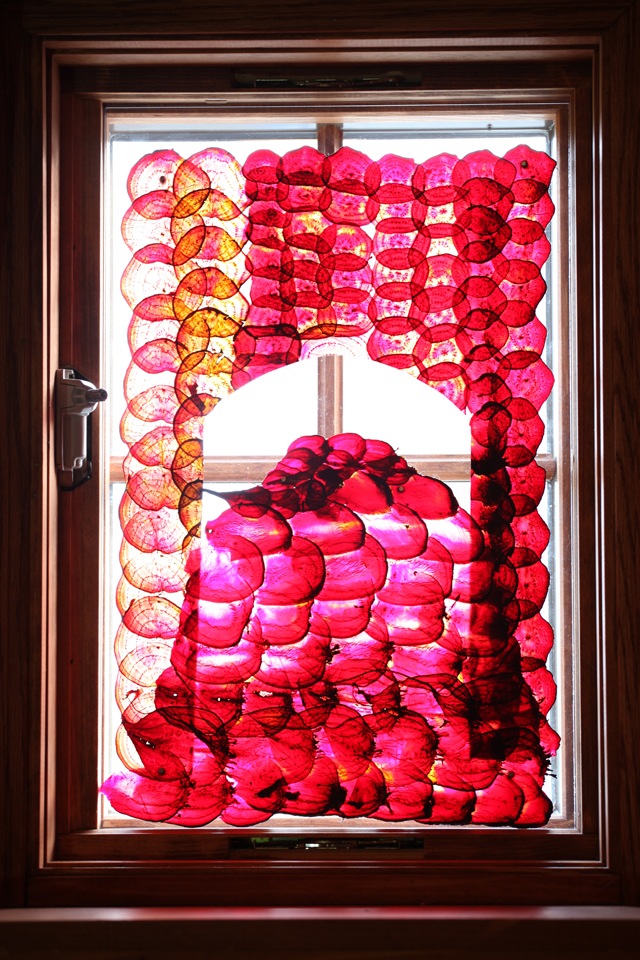
Really, Why Beets?
While stories of my grandmother’s stained hands led me to this project, the lessons I learned with my father keep me here. When I was eight years old, my father was first diagnosed with cancer. His second diagnosis was when I was twenty. His final round of cancer was when I was 28. His hair never grew back after his first round of chemotherapy and radiation. (Sidenote: I have come to think of the similarities between the extremely high experimental doses of chemotherapy in the 80’s and the way some farms apply large quantities of pesticides.)
All of the surgeries and procedures over the years centered around his brain. Over the years, the irregularities in his skull mapped his experiences and my family’s experiences. The slow accumulation of scars was a timeline that my father chose not to hide. There is something extremely beautiful and generous about moving through the world with scars exposed. In contemporary society we put so much effort into editing our lives to look perfect and hide our maps/timelines/scars; I wonder about the stories we are burying and the missed opportunities for connection through openness and vulnerability.
Working with the organic beets in this way confirms what I know to be true about our bodies and our lives. I focus on their intense ephemeral color, the compositions of their veins/roots, and the irregular shapes and blemishes they take on as they move through obstacles they encounter growing underground. At the heart of this project is looking closely and acknowledging the unpredictable moments that mark us as we move through our life cycles.
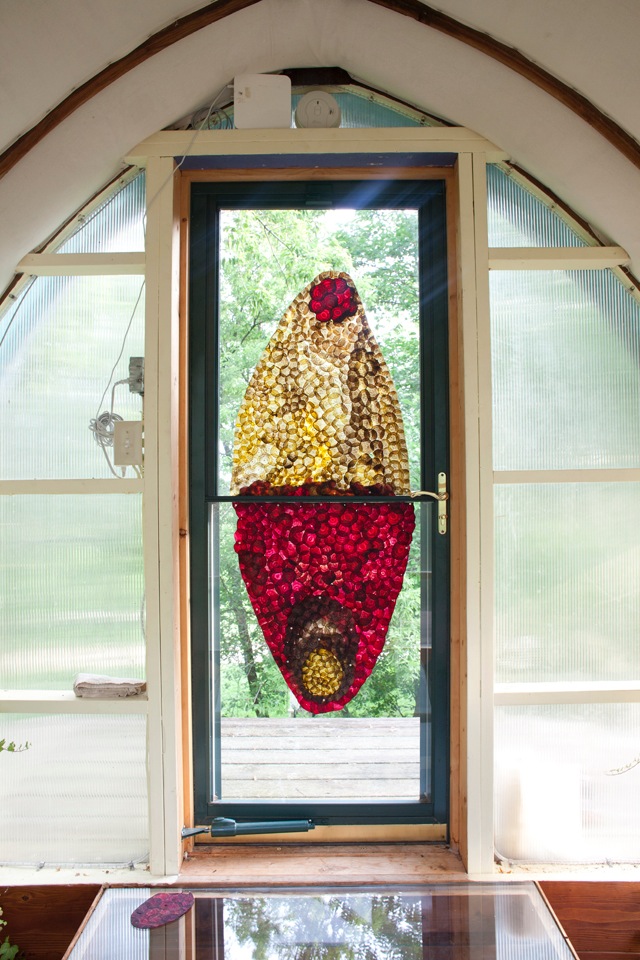
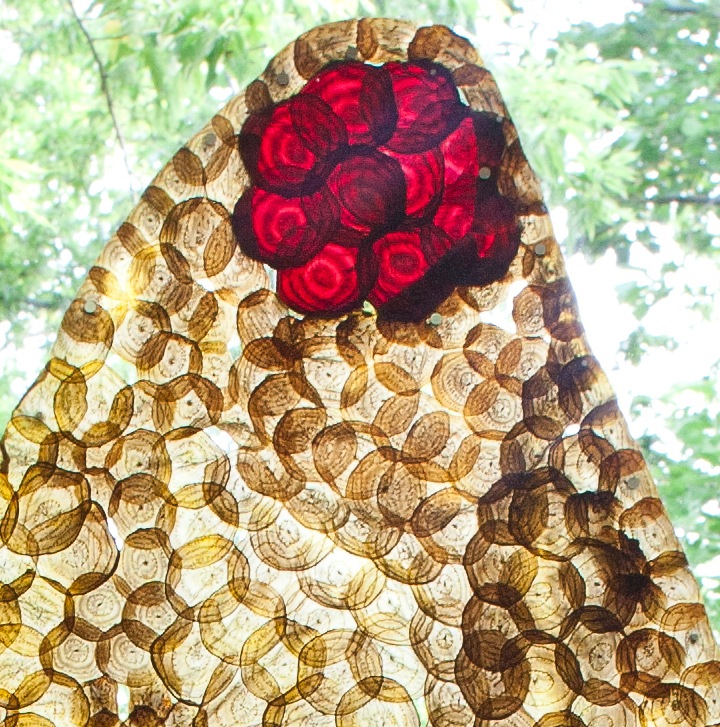
Moving Forward…
As summer fades, so will the beet papyrus. When the time comes, the papyrus pieces will go into the farm compost and eventually back into the soil. My hope is that this is the beginning of an ongoing project/relationship with Angelic Farms and the beginning of a cycle of fresh, bold colors reappearing with each harvest and fading with the change of the seasons. With coming beet harvests, John and Haidy will mail me beets, and I will mail them back fresh panels for the series of smaller windows. Hopefully there will be another opportunity for a new larger scale piece, but we will see.
Thank You
I am so grateful for spending time at Angelic Organics. The members of the CSA are inspiring in the way they prioritize health, community, flavor, and the environment over uniform, “unblemished” crops. This project would not have been possible without John and Haidy saying yes and making time and space for us during the busiest of farm times; all of the staff at Angelic Organics who keep the place up and running in many ways; the company and help of my two dear talented friends, Leah Rosenberg and Tess Wilson; and the funds awarded to me through the Columbia College Chicago Full Time Faculty Grant that made this trip possible. A special thank you to Leo Selvaggio for the beautiful documentation of this project. For more information about my work, please visit my website at www.jagoodman.com or email me at email hidden; JavaScript is required.

